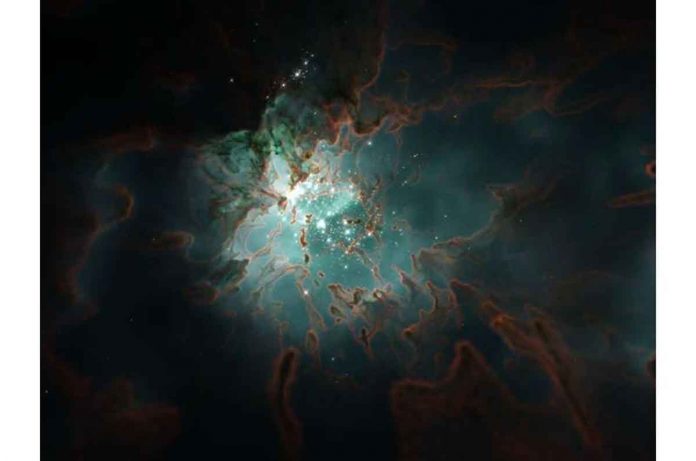Last year, an astrophysicist team led by Northwestern University launched STARFORGE, a project that produces the most realistic, high-resolution 3D simulations of star formation to date. Scientists have now used the highly detailed simulations to solve the mystery of what determines the masses of stars, which has captivated astrophysicists for decades.
The team discovered that star formation is a self-regulating process in a new study. In other words, stars create their own masses. This explains why stars formed in different environments have similar masses. The new discovery could help scientists better understand star formation in our own Milky Way and other galaxies.
The research was published in the Royal Astronomical Society’s Monthly Notices last week. Experts from Northwestern, the University of Texas at Austin (UT Austin), Carnegie Observatories, Harvard University, and the California Institute of Technology were part of the collaborative team. DávidGuszejnov, a postdoctoral fellow at UT Austin, is the study’s lead author.
“Understanding the stellar initial mass function is such an important problem because it affects astrophysics across the board—from nearby planets to distant galaxies,” said study co-author Claude-André Faucher-Giguère of Northwestern University. “This is due to the fact that stars have relatively simple DNA.”If you know a star’s mass, you can predict how much light it will emit, how long it will live, and what will happen to it when it dies. The distribution of stellar masses is thus critical for determining whether planets orbiting stars can potentially support life, as well as the appearance of distant galaxies.”

